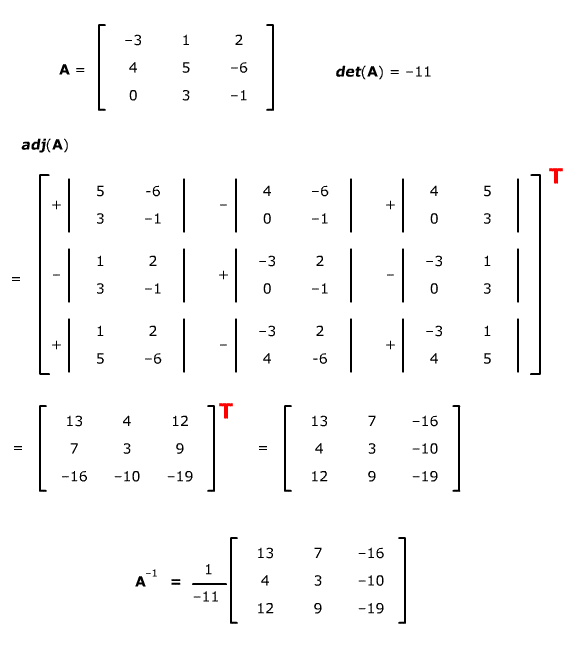
To find the inverse of a matrix using cofactors, you first need to know what its adjoint is.
| The adjoint of a square matrix A is the matrix formed by |
|
|
|
Notation for the adjoint: adj(A) |
The basic property of adjoints.
|
| Proof: The entry in row i and column j of Aadj(A) is the product of row i of A and column j of adj(A). The entries of column j of adj(A) are the cofactors of row j of A. If i = j, we have the product of row i of A and the column of cofactors of row i, which is just the expansion of det(A) along row i. If i ≠ j, we have the product of row i of A and a column of cofactors from a different row of A. This is the same as expanding a determinant with two equal rows (row i is repeated inside the cofactors), and so is 0. The complete product has det(A) along the main diagonal and zeroes elsewhere, and so is det(A)I. |
|
| Proof:
This relation follows from the first by dividing by det(A): |
So:
To find the inverse of a matrix using cofactors |
|
|
|
An example.

(The T for transpose is big and red as a reminder, in case you got absorbed in finding the cofactors and forgot to take the transpose at the end.)